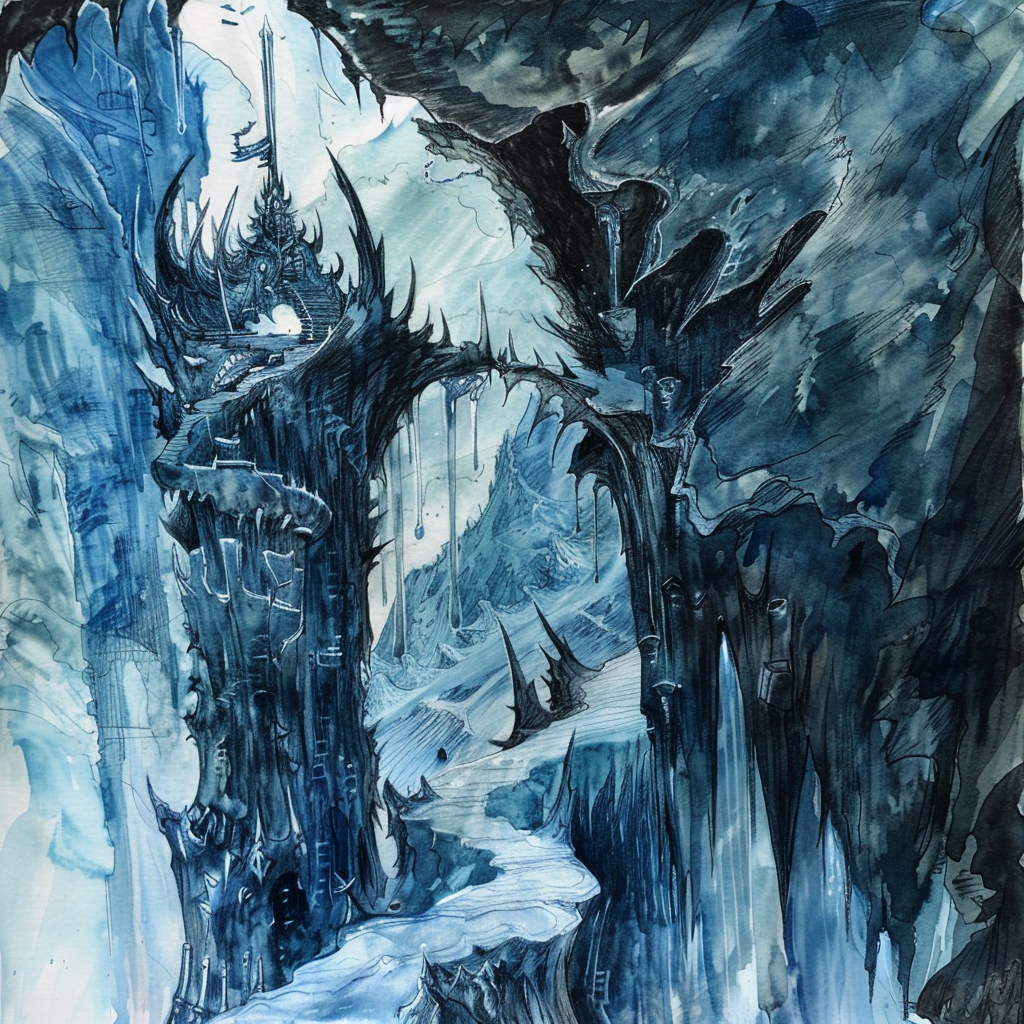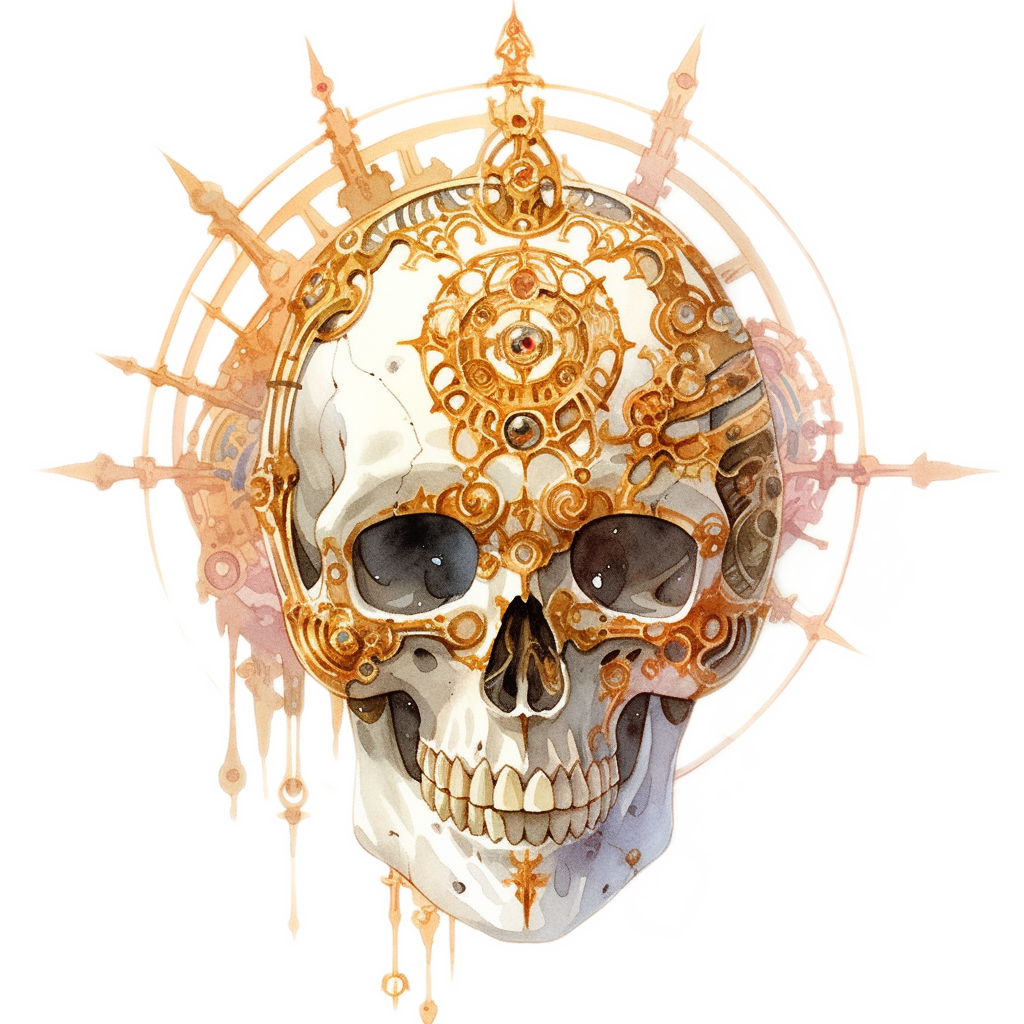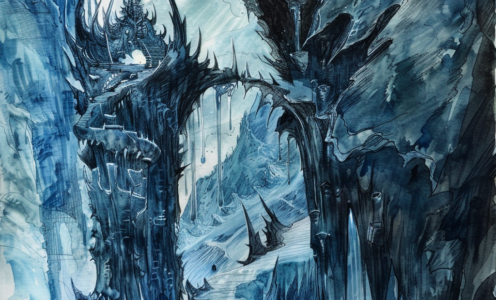[ Baator ] [ Avernus | Dis | Minauros | Phlegethos | Stygia | Malbolge | Maladomini | Cania | Nessus ]
Cania
Baator — Layer the Eighth
The Unrelenting Icy Heart of Baator, the Bones of Hell, the Hell of Envy
Themes of the Layer: The sin of envy. Everything here seethes with the rage that others are getting a better deal, more favour, a better vantage point. From the baatezu who jostle for supremacy to the asura rana who lurk enviously in the deep places coveting power to the icy spires of the plane repositioning themselves, jealousy is the driving force of all the mind games here.
The Burning Chill of Cania
Welcome, you foolhardy traveller, to Cania, a place where even the bravest souls shivers from the bone-deep dread that permeates this hellish landscape. You’re going to want a guide if you’re thinking of navigating this place of endless darkness and torment.
Cania is draped under a perpetual, burning night. The sky’s an eternal expanse of darkness, polluted by anaemic black clouds rimmed with embers. When these clouds part, you’ll see a darkness deeper than any night on the Prime, a void that somehow swallows all light and hope. The jealous winds of Cania are relentless, hot gales sweeping waves of burning sulphurous ash over the land. These siroccos can strip flesh from bone and push even the sturdiest soul to the brink of madness. They are like the breath of the layer itself, carrying the whispers of countless envious souls which mock listeners with sibilant tales of others’ fortunes, accomplishments, and power. The ceaseless barrage of these messages can drive even strong-willed individuals to madness, consumed by jealousy and a sense of inadequacy.
Paradoxically, without the burning winds, Cania is numbingly cold. Frigid glaciers grind against jagged spires, creating avalanches of snow that can crush the unwary. When you’re not caught in a burning storm, the temperatures plummet to far below freezing, making survival without magical protection almost impossible. The landscape is littered with simultaneously frozen and burnt corpses, grim reminders of those who failed to endure.
Pillars and Graves
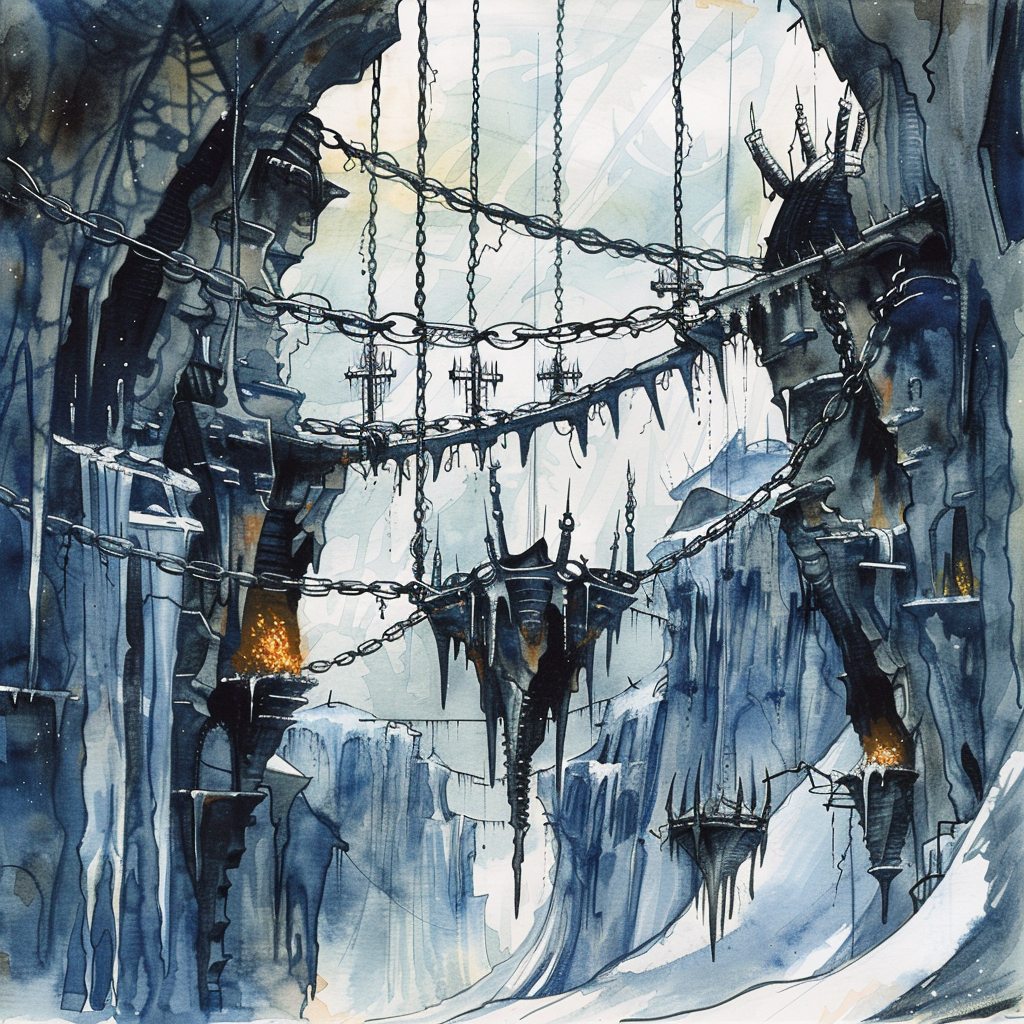
Cania is called the Bones of Hell for a reason. The landscape is a surreal mixture of rocky columns, and seemingly bottomless pits between them. These needle-like spires of ice, stone and bone rise from the depths to heights that no mortal could climb in their lifetime. The little flat land that exists here is mostly in the shape of perilously narrow ledges carved into the sides of the spires, but reaching them involves a treacherous journey across precarious stone platforms and rusting iron bridges held up by titanic chains, that groan and sway alarmingly under any weight. Between the pillars lie endless abysses, their depths thick with darkness. Falling into one of these chasms is surely a death sentence; few survive being buffeted into columns on the fall, and those who do are probably lost forever in the icy void. Chasms can open suddenly as the ground and pillars shift, so tread with care.
Miles of chains and hanging cages stretch across the bottomless abysses, scoured by the howling, ash-choked winds. The cages are not empty, oh no. This is where the petitioners of Cania end up, locked inside tiny dangling prisons and forced to bear the torture of the burning chill for eternity. The cries of the damned compete with the metallic complaints of these infernal structures. It’s a cacophony of despair and suffering, a symphony of the damned. These wretched souls are tormented not only by physical pain but by visions of what they could have had, or what they have lost. They’re forced to watch as others seemingly succeed where they failed, their own shortcomings and missed opportunities replayed endlessly before them. This eternal torture ensures that their envy never abates, keeping their suffering fresh and acute.
Some of the chains are pitted and eroded, others taut and treacherous. Platforms of stone jut out from the spires, offering brief respite—but sometimes giving way without warning. The chains, like the bridges, are precarious and can snap or collapse under too much weight or movement, or just from their own malice.
Some of the Bones of Hell are slender while others can be a mile wide, and it’s these rare large spires that are home to most of the settlements of Cania. These monoliths seem to be in constant competition for prominence. The spires seem to be imbued with a malevolent will, and they shift and change positions, chant goes driven by a desire to outdo one another. The spires that manage to rise higher bask in an eerie glow, while those that falter are swallowed by the darkness below. This perpetual jockeying creates an ever-changing and treacherous landscape, where glaciers clash with the jagged spires, creating sudden and deadly avalanches. Icy torrents can sweep away anything in their path, burying an unlucky sod under tonnes of snow and ice, or slide off the edge and into the bottomless abyss below. I’m not sure which is preferable, cutter.
Dangers and Denizens
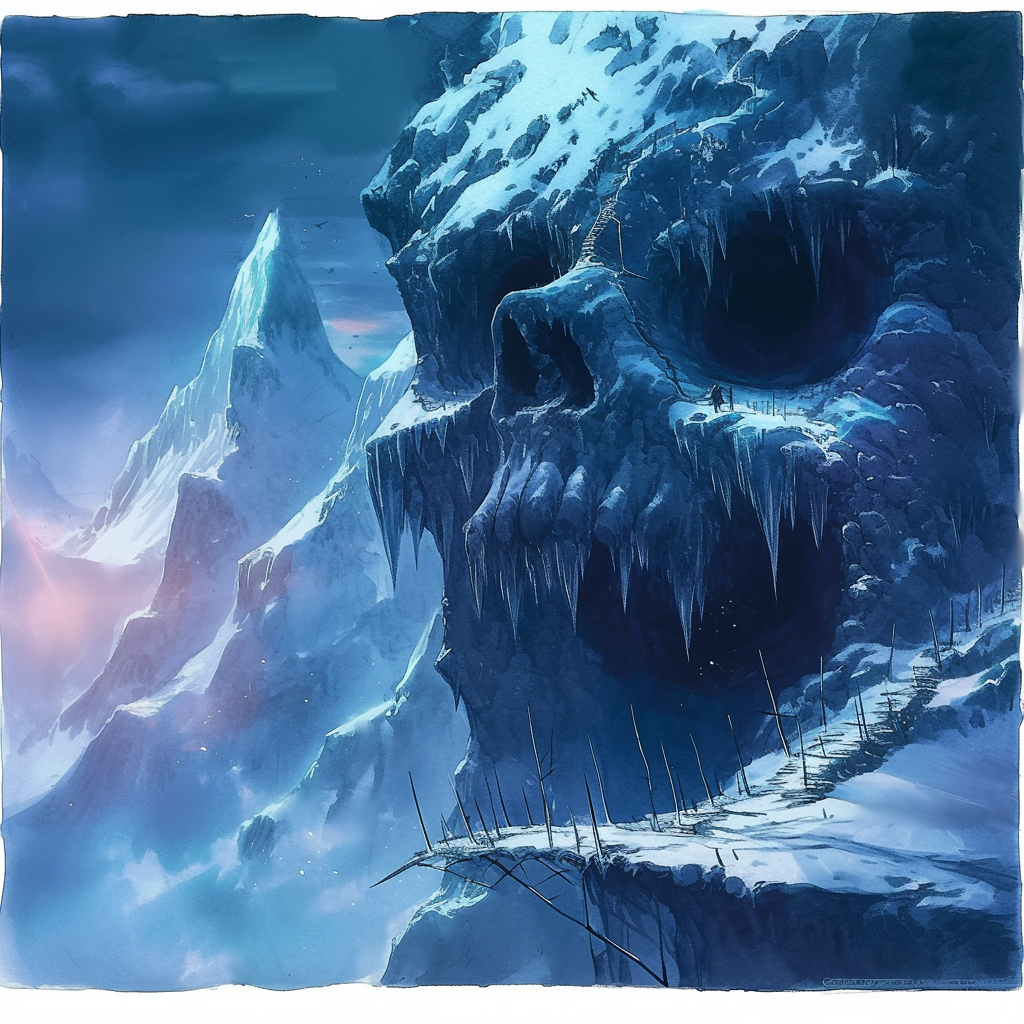
Some speculate that the darkness itself in Cania is alive too, a spiteful force that can sense fear and despair. An osyluth I garnished told me it can manifest as shadowy tendrils that snatch at travellers, trying to pull them into the chasms. To combat this, keep to well-lit areas when possible, provide your own light, and avoid lingering in the deeper shadows. And any shadows that seem to move? Steer well clear.
Certain icy surfaces in Cania act as mirrors, but instead of reflecting a true image, they distort it to show the observer what they desire most, fuelling envy and discontent. These mirrors can trap the weak of mind in a cycle of longing, until they are unable to look away from the unattainable visions of their deepest desires. The ice itself seems to whisper of others’ successes and one’s own failures, gnawing at the mind and spirit.
Cania is home to a significant population of baatezu, particularly gelugons (ice devils) and deimaviggas (spined devils). These baatezu are cunning and ruthless, particularly jealous—even for baatezu—and constantly scheming to rise in power by undermining their superiors and rivals. In Cania, the prevailing philosophy is one of covetousness. The inhabitants believe that envy is the driving force of progress and power. To covet what others have is not only natural but necessary, for without rivalry then there is no motivation to acquire, to excel, to defeat. This doctrine is preached by the gelugons and the infernal dukes, who see envy as a tool to keep the lesser devils striving for more, perpetuating a cycle of ambition and betrayal.
The gelugons constantly vie for Mephistopheles’ fickle favour and the opportunity to rise in the infernal hierarchy. Their bodies, made of crystalline ice, are said to glow brighter or dimmer based on their current standing and success. The dimmer ones are often found scheming in the shadows, their envy a palpable force driving their every action.
Among the shades that haunt Cania are envious spirits, twisted by jealousy. These entities whisper secrets and lies, fuelling discord among any who believe them. They are drawn to those with power and influence, seeking to undermine and destroy them through insidious suggestion and manipulation. Ghostly apparitions of those who’ve perished in the cold, these frost wraiths can drain warmth, contentment and ultimately life force, freezing victims from the inside out. Enchantments against undead and strong sources of heat can keep these spectral horrors at bay. However, beware. Any use of fire tends to attract the attention of Cania’s wild predators. Sure-footed dire polar bears and hellwolves, adapted to the cold and heat, are particularly dangerous. These creatures are drawn to artificial warmth like moths to a flame. Use fire sparingly and always be prepared to extinguish it quickly. Magical sources of heat that don’t produce flames, like enchanted stones or clothing, can be safer alternatives.
More rare and mysterious still are the asura rana, an ancient race of outsiders who were formed from the accidents and misdeeds of powers. The dark is that these eldritch beings pre-date even the baatezu, but have been pushed to the lonely places in the plane by the voracious Baatezu Army. In the shadows, the asura rana bide their time, slowly rebuilding their power.
Philosophies of Cania
The Path of the Green Eyes is a twisted philosophy practised by the baatezu of the Eighth. This belief holds that one’s being must be purged of satisfaction and contentment, which are seen as causes of laziness and weaknesses. Instead, the psyche should be continually burned with the fire of jealousy, fuelling one’s ambitions. This path ultimately leads to the forsaking of all bonds and loyalties, as envy consumes every relationship and alliance. But if it’s been followed successfully, by then a blood should be in charge anyway, and then they’re the one calling the shots. Watch out for baatezu with green eyes, the chant goes, for this signifies advancement on the Path, and these beings have supernatural powers of emotional manipulation and a ruthless streak deeper than the Styx.
The Court of Envy
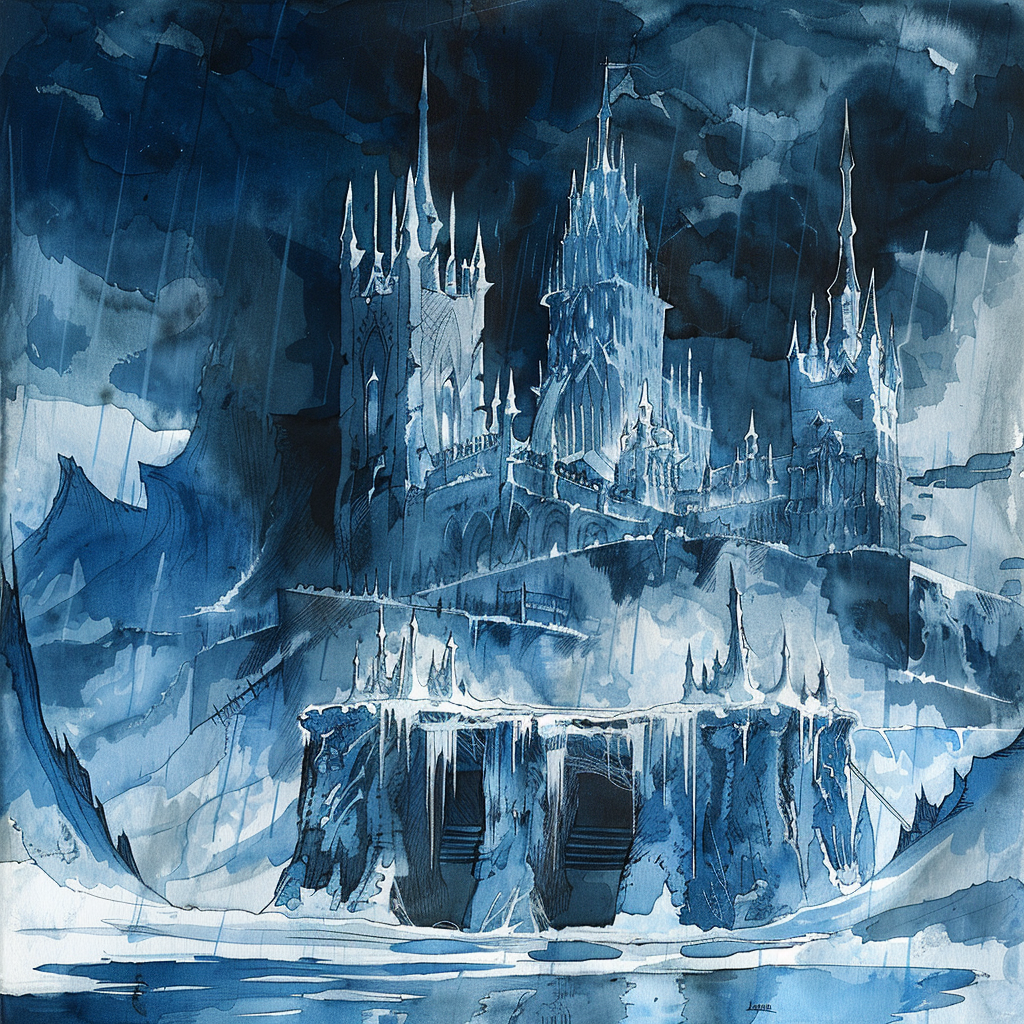
The Court of Mephistopheles can be found in the Frozen Fortress of Mephistar, an imposing structure in the fearsome landscape of Cania. This citadel, an amalgamation of scabrous iron and black ice, is a marvel of infernal architecture and a testament to the power and cruelty of its ruler. Towering spires pierce the eternal night, their tips wreathed in an eerie glow of hellfire and frost. The fortress is both a palace and a prison, with vast halls and intricate dungeons where the screams of Mephistopheles’ vanquished enemies echo like twisted lullabies.
Walls of enchanted ice stand firm, hardened by the intense cold of the layer, while rivers of molten iron flow through the fortress, creating a weird hellish light that causes Mephistar to glow from the outside. Grand halls are adorned with the choicest selection of anguished souls, forever frozen in expressions of agony. The floors are often covered in a thin layer of ice that can crack and shift underfoot, and the chant goes there are plenty of weak points where a careless intruder can crash through a weak floor into the dungeons or the abyss below.
Mephistar is home to a host of baatezu and infernal beings, who serve Mephistopheles with fear, reverence and envy. The gelugons oversee the fortress’s defences and the countless prisoners within. Lesser baatezu, such as spinagons and barbazu, act as messengers and guards, maintaining the fortress’s operation and enforcing Mephistopheles’ will.
The infernal dukes Oriax, Pirias, and Rasvocel also have their own domains within Mephistar, each vying for Mephistopheles’ favour through a hotbed of political intrigues and overt displays of power—yet at the same time looking for any advantage they can find to increase their own personal power. These three dukes each command their own retinues of devils, although their numbers are dwarfed by the armies of Mephistopheles himself.
The Lord of the Eighth
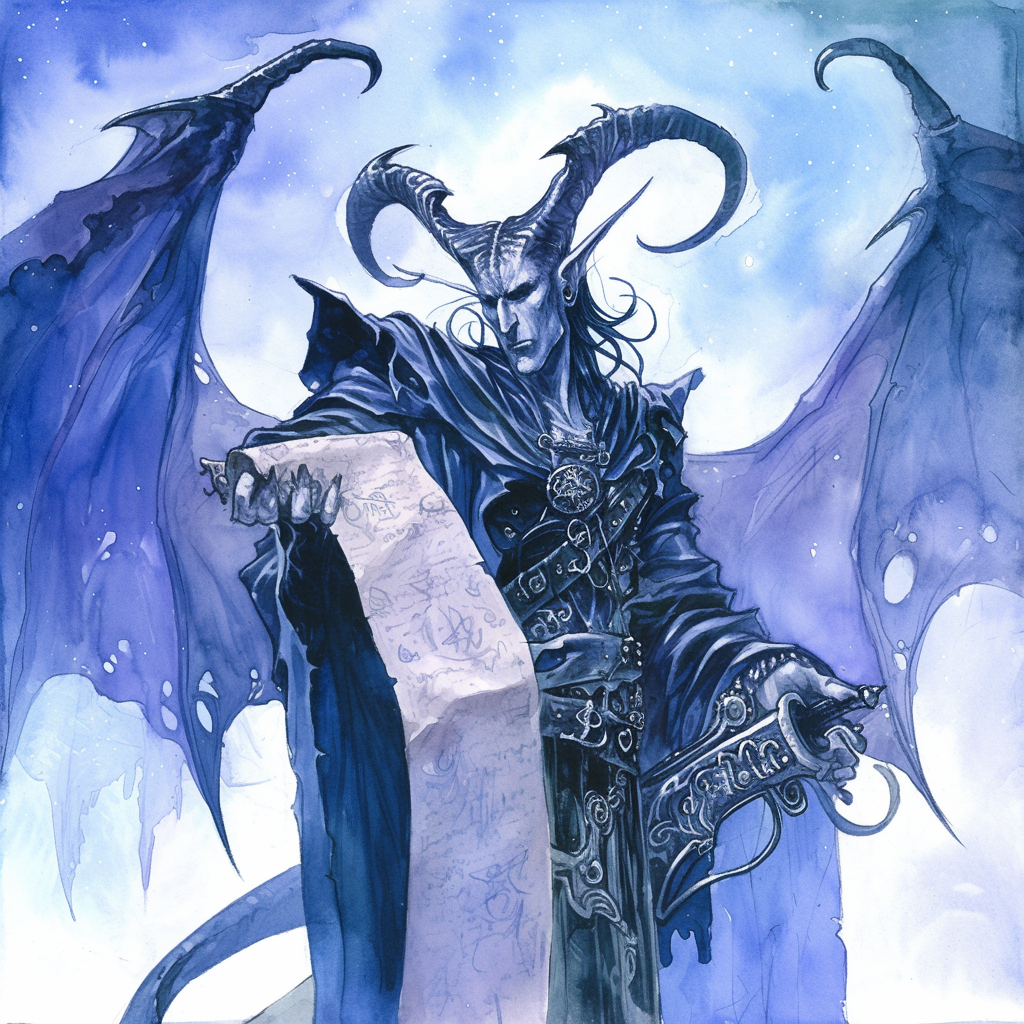
Mephistopheles, often referred to as the Crimson Son, is one of the most enigmatic and powerful archdevils in Baator. His visage is unforgettable: A towering figure with skin that is either red- or blue-blooded depending upon his mood, horns that curve like a ram’s, and eyes that burn with a fierce, unyielding intelligence. His wings, vast and leathery, are often seen enveloped in flickering hellfire, which glows ominously around him. Taming Hellfire is indeed his current obsession, a mysterious force that is difficult to control and even more dangerous to wield, for it can burn even fire-resistant baatezu to ashes. Chant goes that the heat storms that sweep the layer are a result of experiments gone awry. But that could just be screen put out by the many enemies ofMephistopheles.
More than most other archdevils, he shares a unique, almost symbiotic bond with the layer, and is able to manipulate its very fabric with a mere gesture. His connection to Cania is mysterious, and even Asmodeus finds it too valuable to dismiss. Be wary of his meditations and whims; crossing Mephistopheles is a gamble few survive. While he is seen by many as the right-hand of Asmodeus, Mephistopheles is constantly scheming to increase his own power and influence. His relationship with other archdevils is fraught with tension and betrayal. Dispater, for instance, once an ally, has recently become a target for Mephistopheles’ machinations.
At the heart of Mephistar lies the throne room, a cavernous chamber of ice and iron where Mephistopheles holds court. The throne itself is a massive, winged structure of blackened iron and frosted crystal, radiating a cold that can freeze lesser beings on the spot. From this throne, Mephistopheles commands his realm, his every decision and decree shaping the fate of Cania and its denizens.
Locations of Cania

- Adamantine Morass, the (realm of Dahak)†
- Chained Aerie of the Ebon Harpies, the (independent burg)
- Crystal Caves, the (site)
- Dustbringer, the (site)†
- Gelineth (site)
- Icehark (burg)
- Iron Cyst, the
- Kintyre (burg)
- Lasraspan (site)
- Maw of the Pit, the (gate)
- Mephistar, the Hellfire Testament (realm town, realm of Mephistopheles)
- Nargus (site)
- Nebulat (site)
- Pit, the
- River Styx (planar pathway)
- Shattered Castle, the(site)
- Spike of Our Lady’s Pain, the (realm of Doloras, Queen of the Night)†
- Spire of Alistonach, the (site)
- Spire of the Serpentine Order, the (site & gate)
- T’chemox (site)
- Voxfang (site)
- Whispering Vial (site)
Powers of Cania
- Dahak (draconic power of destruction and treachery)†
- Doloras (infernal power of dispassion and pain)†
- Inkariax (velestrac demagogue of agony)†
- Ioramvol (asura rana of premature burial)†
- Father Llymic (great old one power of apocalyptic cold)†
- No Cha (Chinese power of thieves)†
- Taraksun (asura rana of shattered bonds)†
The Court of Mephistopheles
- Adonides — Steward of Cania
- Antilla — Bard of the Court
- Baalphegor — Consort of Mephistopheles
- Barbas — Chamberlain of Mephistar
- Bechard — pit fiend of storms and tempests
- Bele — Justiciar of Cania
- Bifrons — Commander of the Armies of Cania
- Guland — Physician of the Court
- Hutijin — Commander of Pit Fiend Legion
- Nexroth — Commander of Malebranche
- Quagrem — Dean of the Hellfire Testament†
- Testaron — Court Dragon
Movers and Shakers of Cania
- Haborym — Duke of Lasraspan†
- Oriax in Bindings — Great Marquis of Hell†
- Pirias — Infernal Apotheker of the Whispering Vial†
- Rasvocel the Vulture King — baatezu lord of carrion†
- Wylgart the Unbroken Word — Lord High Justice of Cania†
Organisations of Cania
- Serpentine Order, The
Creatures of Cania
- Adhukait, asura†
- Barbazu, baatezu
- Cornugon, baatezu
- Deimavigga, baatezu†
- Freezing floe†
- Frost worm†
- Gelugon ,baatezu
- Kaulder†
- Kochrachon, baatezu
- Libitinarii, kyton†
- Marnasoth, baatezu†
- Mite, blizzard†
- Pit fiend, baatezu
- Qallupilluk†
- Remhorhaz
- Ursikka†
- Wisagatcak†
- Xor-Yost
Canonical Sources
- Book of Vile Darkness [3e]
- Fiendish Codex II [3e]
- Book of Vile Darkness [4e]
- Dragon Magazine #233
- Faces of Evil [2e]
- A Guide to Hell [2e]
- Hellbound: The Blood War [2e]
- Manual of the Planes [1e, 3e, & 5e]
- On Hallowed Ground [2e]
- Planar Handbook [3e]
- Planes of Law [2e]
- Planescape Campaign Setting: DM’s Guide to the Planes [2e]
Canonwatch: Entries are from D&D canon unless otherwise marked, although when the canon is sparse I’ve got creative with the details; † adapted from a 3rd party publication; ‡ homebrew.
More details to follow!
Other Sources:
- Jon Winter-Holt
- Atlas of the Planes — Cania
